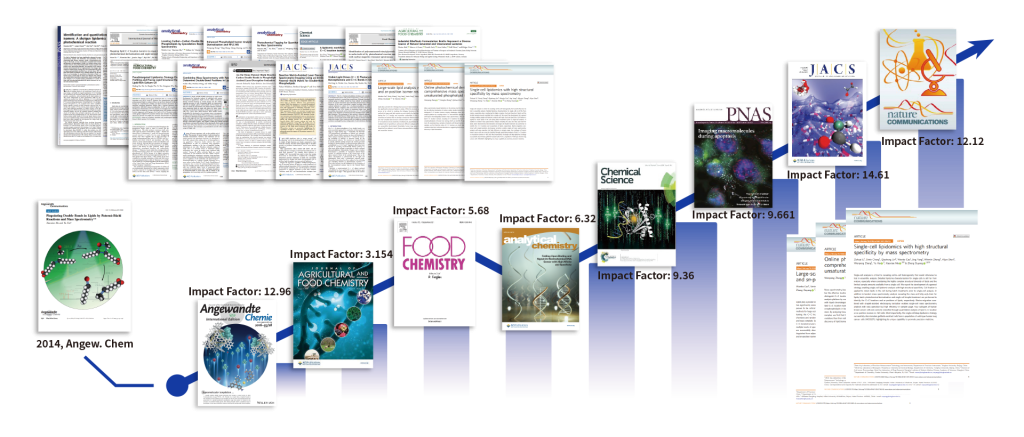Lipidomics in-depth structural analysis system
Non-targeted Lipid Analysis Technology Based On Ω Analyzer
Lipidomics in-depth structural analysis system
Ω Analyzer
- Precision reactor for lipid structure analysis based on the Paternò-Büchi photochemical reaction.
- Fully automated control of the lipid structure analysis workflow.
- Lipid structure analysis software based on proprietary algorithms and databases.
- Realize high-throughput lipid in-depth structure characterization.
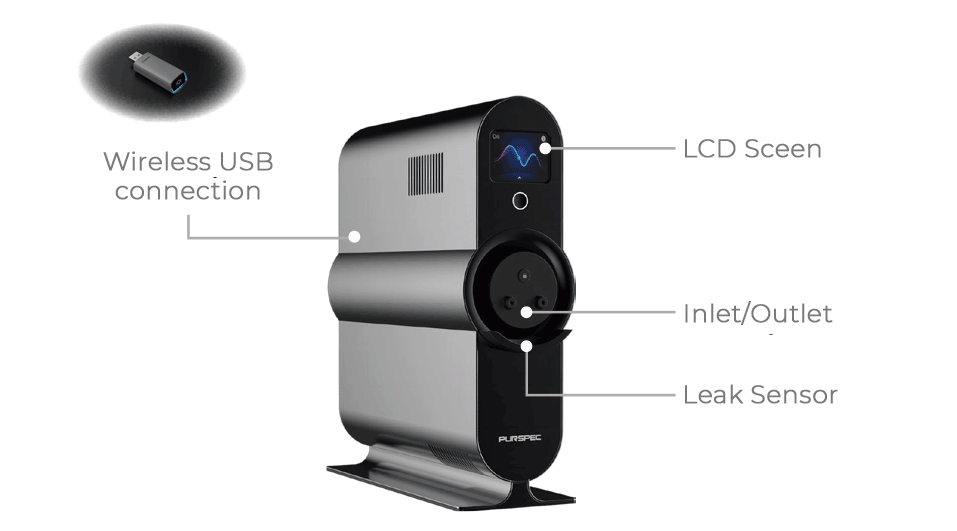
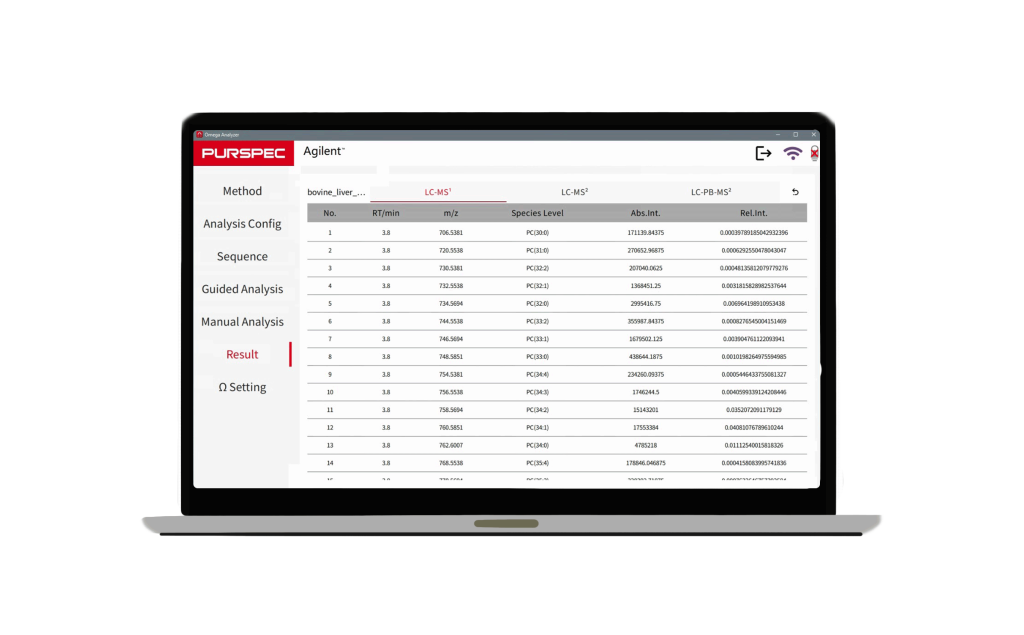
Fully automatic
and intelligent
Supportting 6 major
groups of lipid analysis
Accurate, Rapid
and Reliable
Simple operation
interface
The Ω Analyzer System Combined with LC-HRMS system, to Enable:
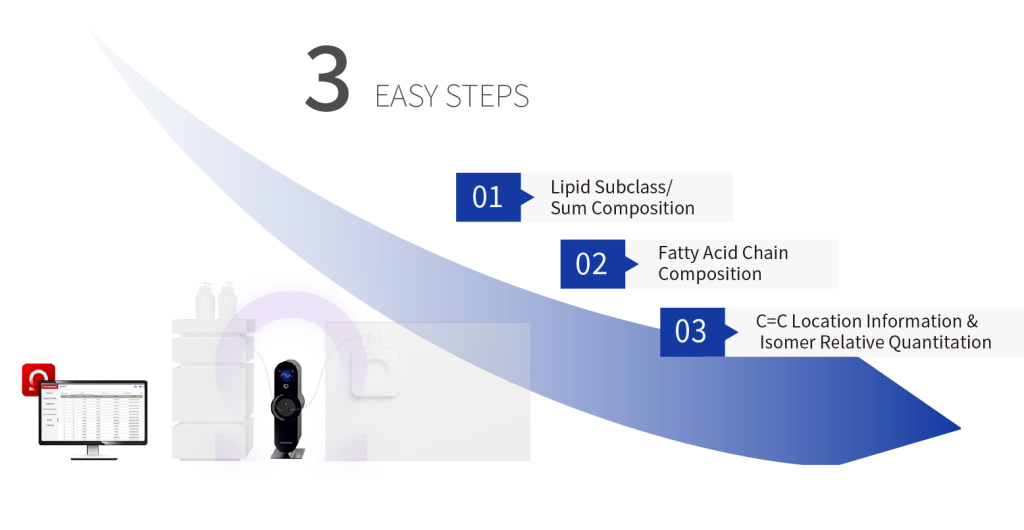
- Comprehensive routine lipid analysis workflow;
- In-depth structural lipid identification analysis;
- Relative quantitative analysis of structural lipids.

In-depth structure lipidomic analysis
Lipid subclass analysis
Lipid fatty acid chain analysis
Lipid C=C position structure analysis
Lipid sn-position structure analysis
Bioinformatic analysis
Univariate statistical analysis
Multivariate statistical analysis
Differential metabolite identification and cluster analysis
Multivariate statistical analysis
Differential metabolite identification and cluster analysis
Application Examples
Disease Marker Exploration:Type 2 Diabetes Disease Marker Exploration
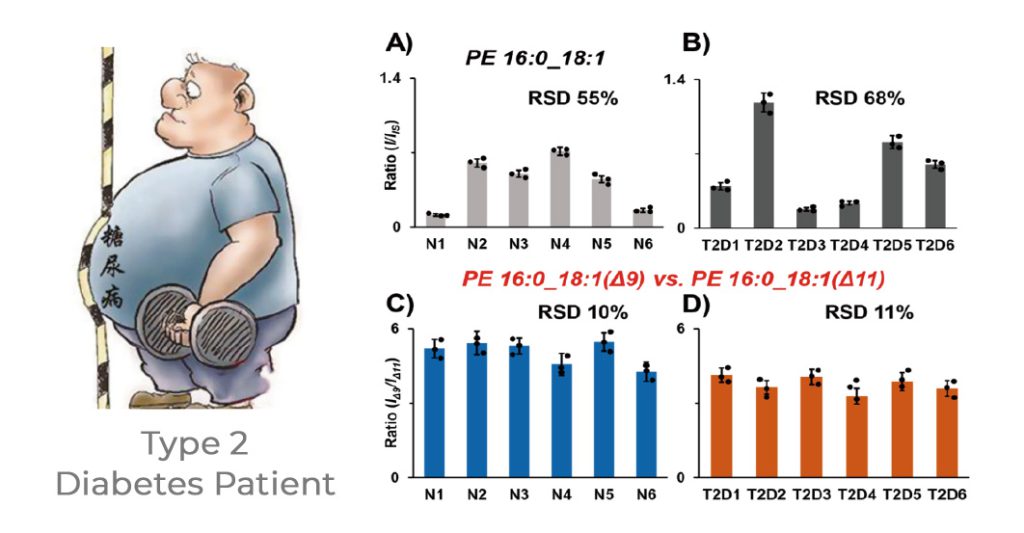
Nat Commun. 2019;10(1):79.
- The lipid subclass concentrations in plasma samples of 6 groups of healthy and type 2 diabetes patients were significantly different from each other and did not have statistical regularity, but the relative ratios of Δ9/Δ11 isomers were highly consistent , which could clearly distinguish the two groups of people.
- Lipid C = C double bond isomers can be used as potential biomarkers for disease screening.
Lipid Structure Profiling Research:Compositional Analysis of Fatty Acid Double Bond Isomers in Milk Powder
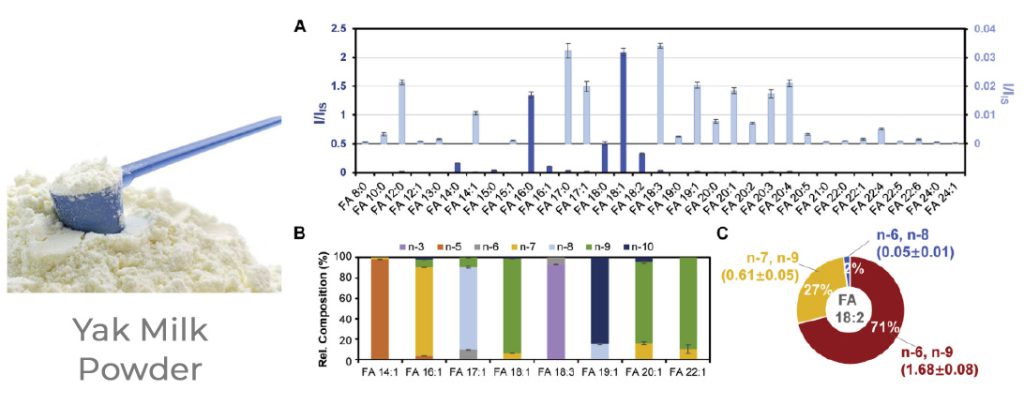
J Lipid Res. 2021;62:100110.
- Dairy products contain diverse distribution of FAs, which are frequent subjects of study for health effects.
- The FFA in yak milk powder was analyzed, a total of 33 FFAs were profiled at sum composition level.(Figure A)
- From PB-MS/MS analysis, relative compositions (%) of C=C location isomers in eight groups of FAs were obtained.(Figure B)
- Quantitation of three C=C location isomers of FA 18:2 in yak milk powder was also be performed and got the concentration of each isomer.(Figure C)
Natural Herbal Medicines Research:In-depth Structural Lipidomic Analysis of Platycodon Grandiflorum
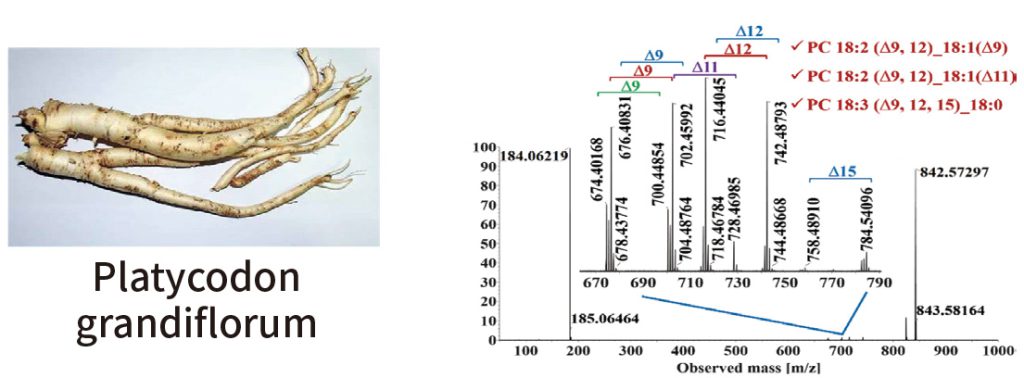
J Chromatogr A.2021 1654:462477.
- Platycodon grandiflorum (PG), as a well-known medicine food homology species, possess various pharmacological effects and health benefits. Aiming to facilitate in-depth and global characterization of the chemical compositions of PG, a profiling method based on ultra-high performance liquid chromatography coupled with ion mobility quadrupole time-of-flight mass spectrometry (UPLC/IM-QTOF-MS) was conducted.
- Consequently, as many as 187 compounds were plausibly or unambiguously identified, due to their widely confirmed bioactivities, an analysis scheme was developed by hydrophilic interaction liquid chromatography and electrospray ionization tandem mass spectrometry combined with the online Paternò-Büchi reaction (HILIC-PB-MS/MS).
- The fatty acyl chains and C=C locations of 180 PLs molecular species, which fell into four classes, were unprecedently characterized.
- This exposure strategy of multi-type constituents greatly enriches the chemical profiling of PG, and helps promoting the further development of therapeutic agents and nutraceutical products from PG.
Disease Marker Exploration:Breast Cancer Disease Marker Exploration
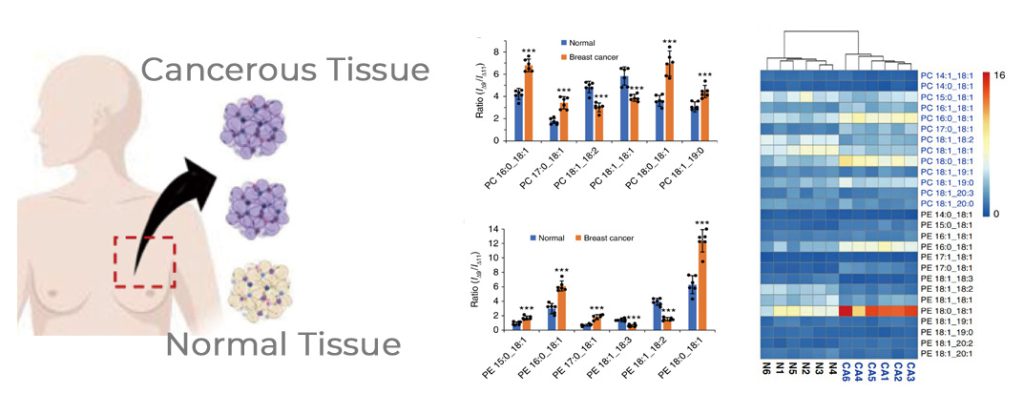
Nat Commun. 2019;10(1):79.
- Polar lipid extract from human breast tissue samples was analyzed, including 6 cancerous and their para carcinoma sections for comparison.
- Relative quantitation of PCs and PEs at subclass level between normal and cancerous breast tissue samples performed by LC-MS/MS showed six lipid species were found to have statistically significant changes.
- Relative isomer compositional analysis of C18:1 Δ9/Δ11 for PC and PE between normal and cancerous breast tissue samples by LC–PB–MS/MS showed significance differences.
- Hierarchical cluster analysis based on C18:1 Δ9/Δ11 ratios of 29 pairs of PC and PE isomers in normal (N1–N6) and cancerous breast tissue samples (CA1–CA6). Colors represent different ratios as indicated by the color bar.
- These results indicated that C=C double bond isomers have the potential to be used as Breast Cancer biomarkers.
Pathogenesis Research:Single-cell In-depth Lipid Analysis

Acc Chem Res.2021;54(20):3873-3882.
- The performance of the single-cell PB-MSn method to discriminate drug-resistant human NSCLC cells (HCC827-GR6) from the wild-type NSCLC cell population was evaluated.
- Neither a profile analysis nor the sn-position resolving a lipid analysis can accurately discriminate HCC827-GR6 cells from HCC827 cells (control).
- A lipid analysis at the C=C location isomer level correctly discriminates gefitinib-sensitive from gefitinib-resistant cells.
- The progress achieved with PB-MS/MS demonstrates the significance of performing a lipid analysis with C=C location specificity to a single-cell analysis.
Facilitating Frontier Scientific Exploration
In 2018, NATURE METHODS highlighted the research on lipid isomer identification carried out by Prof. Yu Xia’s Team at Tsinghua University, demonstrating the importance of deep structural lipidomics analysis for the development of clinical medical research and other fields.
